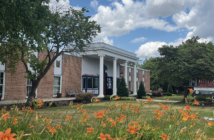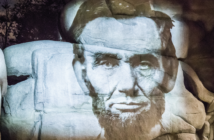Telling the U.S. Army’s Story, One Soldier at a Time
By Karen Hendricks | Photography by Noel Kline
Just 30 miles north of Gettysburg, the U.S. Army Heritage and Education Center (USAHEC), Carlisle, is considered the nation’s leading organization dedicated to educating and preserving the legacy of Americans who have served their country as U.S. army soldiers.
The range, depth, and breadth of USAHEC is staggering: a 54-acre site housing 16 million military items (and growing), including what’s considered the world’s largest collection of Civil War photographs with a grand total of 1.7 million military photographs. USAHEC not only includes an indoor museum component, but also outdoor exhibits, and an extensive library, archives, and artifacts collection—all free and open to the public.
“It’s one of the treasures of our region,” says Aaron Jumper, communications coordinator of the Cumberland Valley Visitors Bureau. “While it’s certainly a great destination for history buffs, they make it interesting and exciting for all visitors.”
“You can read through history textbooks, which provide a great framework,” Jumper says. “But, when you’re able to experience a museum, especially one that is interactive, it provides a more experiential component. You experience what others have gone through, those who gave their lives or were around to tell the story.”
Stories are at the heart of USAHEC. Touring the main indoor museum, the “Soldier Experience,” presents a unique experience for every visitor. That’s because each visitor picks up a dog tag at the front desk to begin. Exhibits depict the Army’s history, starting with the Spanish-American War, through World Wars I and II, the Korean and Vietnam Wars, culminating with current operations in Afghanistan. Along the way, visitors scan their dog tag to learn their soldier’s story and see how it fits into the nation’s history.
Interactive components bring history to life, according to Lindsay Strehl, USAHEC outreach and programs coordinator. “It puts you into the soldier’s shoes, and you experience everything through the eyes of one individual. You learn how to march, salute, and pass a drill sergeant; there’s a simulated shooting range where you pick up guns to see how heavy they were…you can experience a parachute drop…and it brings your soldier’s story home to the end of the exhibit where you find out what [ultimately]happened to your soldier.”
Strehl says many visitors actually go through the “Soldier Experience” several times, choosing different dog tags so they can experience several real-life stories. At the exhibit’s conclusion, visitors have the opportunity to write letters to soldiers currently serving in operations.
Themes and artifacts for several additional exhibit spaces rotate regularly: An exhibit of soldiers’ artwork changes every nine months; current special exhibits include one highlighting the Vietnam War, and another titled “Goodbye Broadway, Hello France: America in the Era of World War I.”
Upstairs, “Treasures of the USAC” is stocked with extremely unique artifacts. Strehl points to her favorite item—a large ledger created during a post-Civil War ceremony held by the Carlisle GAR. “Veterans of the Civil War each filled out a page in the book, writing their memories from the war, why they enlisted—all in their own handwriting,” she says.
Outdoors, the mile-long Army Heritage Trail connects 14 interactive exhibits—full-size tanks and helicopters, a WWI trench, a WWII Obstacle Course, and much more. “It starts with the French-Indian War through current events,” says Strehl. “It’s an immersive way of showing what living conditions were like during each period of history. Buildings were made as they would have been during each time period—for example, in the Civil War cabins, you can feel how cold the soldiers would have been. Or, you can go into the German pillbox and see how dark it was—imagine living in those conditions for weeks at a time.”
Annual visitation has grown to 185,000 visitors; Strehl says projections are for 200,000-plus visitors in 2017. The federally-funded museum is also supported by the nonprofit Army Heritage Center Foundation, and employs 85 people in various capacities from those in visitor and education services, to those skilled in archiving, processing, and collections—all under the U.S. Army War College umbrella.
Strehl, whose own father was a Vietnam vet, says she considers herself “lucky to keep vets’ stories alive…When veterans come and their memories are jogged by exhibits and start sharing their experiences—their families say, ‘We’ve never heard these stories before,’ and it’s almost like a healing process.”
Upcoming USAHEC Events
January 21
Winter History Program: Genealogy Workshop
10:30 a.m. – 2 p.m.
May 20-21
Army Heritage Days
9 a.m levothyroxine synthroid. – 5 p.m.
This is USAHEC’s biggest annual event, featuring re-enactors, demonstrations, and lectures; and drawing an average of 5,000 people. The 2017 theme is the Armored Forces and will feature a large number of tanks and maneuvers.
October 5-8
Oktoberfest
November
Veterans Day Events
Numerous “Perspectives in Military History Lectures and/or Roundtables” are held each month, featuring noted speakers and historians. Visit USAHEC.org to learn more.




